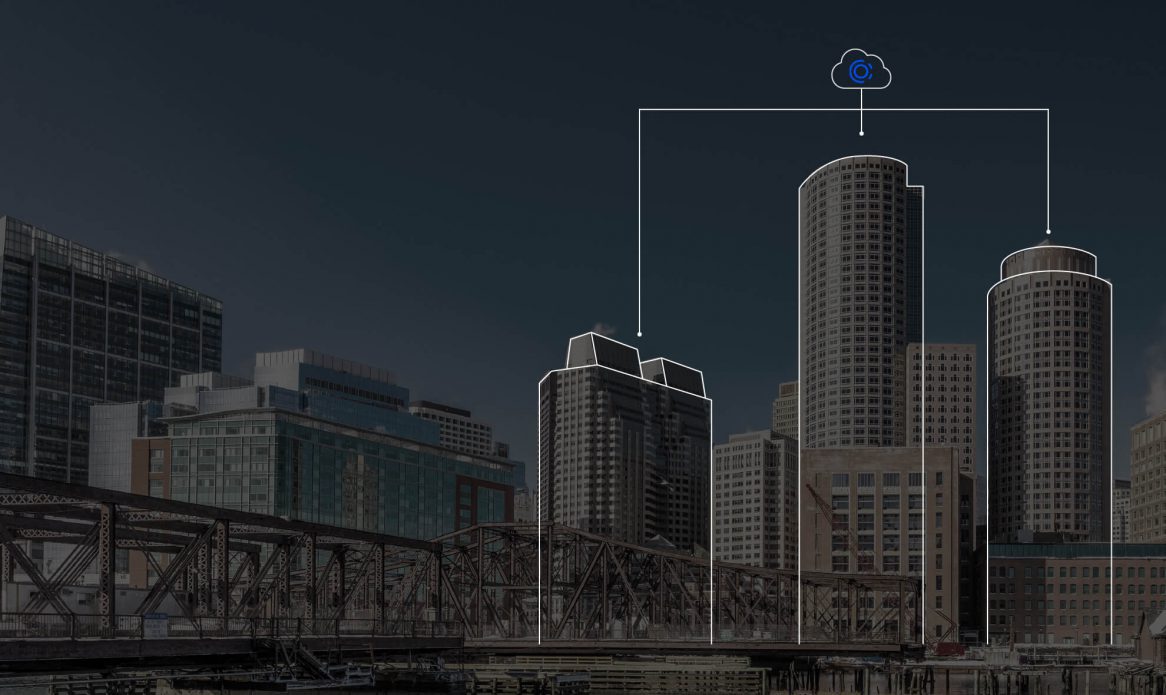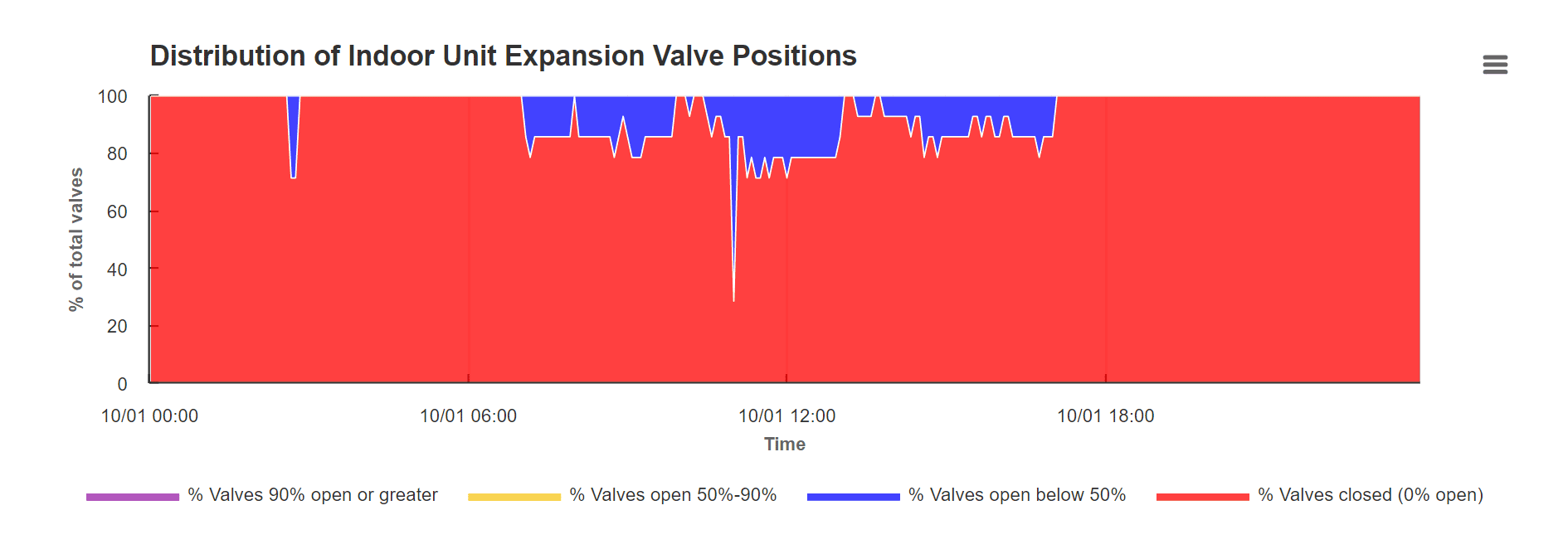Clockworks Analytics Develops FDD Analysis for VRF Systems Monitoring
October 15, 2024

VRF systems are ubiquitous in modern HVAC technology.
Invented in the 1980s and made commercially available in the United States in the 2000s, Variable Refrigerant Flow (VRF) systems are widely deployed HVAC technology comprised of large-scale ductless vapor compression systems. VRF offers the ability to dynamically heat and cool spaces through a method that is energy-efficient, cost-effective, and provides a high degree of occupant comfort.
The VRF market is vast. More than 20 major manufacturers make up the landscape of what is a $20B+ global industry. Due to this significant HVAC market share, Clockworks clients are undoubtedly familiar with VRF systems. These types of systems exist throughout the portfolio of buildings they are tasked with maintaining.
Challenges of FDD for VRF Systems
Despite the high prevalence of VRF systems in the market, these types of systems have traditionally been challenging for Clockworks to perform advanced diagnoses on. VRF manufacturers historically have not offered a rich set of data points for Clockworks to discover and analyze. Traditionally, VRF systems offer no more than basic points like temperatures, setpoints, and commands. Without the proper data points, advanced analytics can’t be performed.
However, the game is changing. Certain technologies have recently emerged that expose more points from VRF manufacturers’ proprietary controls. These technologies open up sophisticated points like refrigerant temperatures, pressures, and expansion valve points, which allow Clockworks to develop more useful diagnostic checks.
New VRF Systems Analysis in Clockworks FDD
Clockworks has developed two major new analysis types to offer enhanced diagnostics for VRF:
- VRF System analysis
- VRF Indoor Unit analysis
VRF System analysis monitors the VRF system as a whole, including all indoor units, outdoor units, and refrigerant circuit components like compressors and heat exchangers. The analysis runs checks on the entire circuit, including outdoor unit subcooling checks, and provides system-level operating statistics.

VRF Indoor Unit analysis is specifically tailored for in-depth analysis of VRF indoor zone units. The most notable advancement of this new analysis type is the ability for Clockworks to calculate a superheat value for individual indoor units and diagnose when these values are out of range.
Since VRF systems operate dynamically between heating and cooling, Clockworks has ensured the new VRF analyses function properly whether the VRF system is in heating or cooling modes.
Why Does the New VRF Systems Analysis Matter?
VRF systems require maintenance, and the traditional methods of performing scheduled preventative maintenance on HVAC equipment are becoming obsolete. With Clockworks’ new diagnostic checks on VRF, the ability to perform proactive, condition-based maintenance on VRF systems is now a reality.
By leveraging Clockworks VRF diagnostic checks, mechanical contractors and facility operators now have a better handle on monitoring refrigerant charges, refrigerant leaks, line restrictions, and compressor issues.
For example:
- High indoor superheat values can indicate a low refrigerant charge, pointing an operator to a dangerous refrigerant leak in the system. High superheat can also indicate an indoor unit starved of refrigerant due to line restrictions or expansion valve/metering device issues.
- Compressor superheat issues can indicate problems with compressor loading or improper compressor oil levels, helping operators avoid costly compressor replacements.
- Low superheat can indicate an overly high refrigerant charge. With too much refrigeration in the system, liquid refrigerant can make its way back to the compressor, causing permanent damage to the compressor via a condition called floodback. Low superheat can also indicate that an expansion valve is stuck and allowing too much refrigerant to flow into the evaporator.
These new analyses proactively maintain and extend the life of VRF equipment (maintenance priority), optimize environmental conditions (comfort priority), and add to the overall safety of occupants in the building. It’s a significant win for condition-based maintenance!
What Information Does Clockworks Need for VRF Systems Analysis?
As previously mentioned, the VRF system must provide a rich set of data points to Clockworks over an open protocol. Specifically, for Clockworks to calculate indoor unit superheat, the following points must be available:
- Indoor Unit Gas Pipe Pressure
- Refrigerant Type
- Indoor Unit Expansion Valve Position and Fan Status (not required, but improves diagnostics)
- Indoor Unit Gas Pipe Temperature
For Clockworks to calculate outdoor unit subcooling, the following points must be available:
- Outdoor Heat Exchanger Liquid Pipe Pressure
- Outdoor Heat Exchanger Liquid Pipe Temperature
- Refrigerant Type
- Outdoor Heat Exchanger Expansion Valve Position and Fan status (not required, but improves diagnostics)
For Clockworks to calculate compressor suction and discharge superheating, the following points must be available:
- Compressor Suction/Discharge Pressures
- Refrigerant Type
- Compressor Suction/Discharge Temperatures
If you need help assessing if your VRF system is ready for these new analyses, contact your Clockworks representative today.
Ongoing Clockworks Development
This recent analytics development demonstrates Clockworks’ commitment to innovation and adaptability in the ever-evolving HVAC industry. By creating advanced diagnostics for VRF systems, Clockworks has addressed a significant gap in the market, providing clients with powerful tools for proactive maintenance and energy management.
The new VRF analytics, built on Clockworks’ robust global data model, represents a major step forward in HVAC system management. This advancement not only enhances the value proposition for current clients but also positions Clockworks as a leader in comprehensive HVAC analytics.
As the HVAC industry continues to evolve, Clockworks remains at the forefront, consistently expanding its capabilities to meet new challenges. With these new VRF analytics, Clockworks reaffirms its dedication to providing cutting-edge solutions that improve building performance, reduce operational costs, and contribute to a more sustainable future in facility management.
Back to blog
